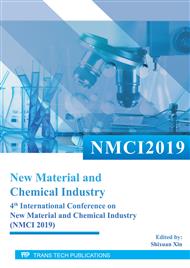p.223
p.231
p.236
p.242
p.251
p.257
p.265
p.272
p.279
Analysis on the Selection of Low Temperature Resistant Materials for Electric Equipment State Monitoring Device in Cold Areas
Abstract:
As the important device to perceive the operating state of grid, the condition monitoring device of electric equipment solves such problems as the high rate of false alarm and failure of device caused by the low temperature in winter of cold areas. This paper measures the thermal conductivity of such three kinds of materials as asbestos, rubber and nano porous aerogels in the temperature range of -55°C to +80°C by steady state method, and analyzes the influence of temperature on the thermal conductivity of three materials. According to the result of experiment, the thermal conductivity of nano porous aerogels is the lowest and is affected least by temperature among three kinds of materials. Nano porous aerogels apply to state monitoring device operated in cold areas; and rubber can also be used as thermal insulation material when the operating temperature is generally higher than -20°C.
Info:
Periodical:
Pages:
251-256
Citation:
Online since:
May 2020
Authors:
Price:
Сopyright:
© 2020 Trans Tech Publications Ltd. All Rights Reserved
Share:
Citation:


